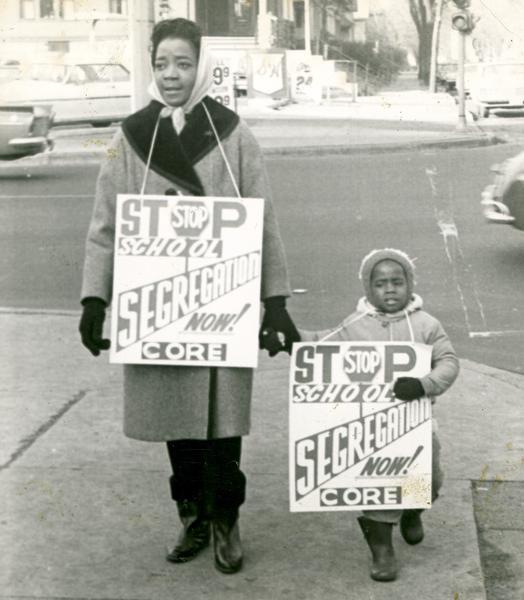School Desegregation Order Ended: The Future Of Equal Education

Table of Contents
The Legacy of School Desegregation Orders
The history of school desegregation is a complex and often painful narrative. The landmark Supreme Court case, Brown v. Board of Education (1954), declared state laws establishing separate public schools for black and white students unconstitutional. However, the implementation of this decision faced fierce resistance, resulting in decades of struggle and uneven progress towards racial integration in schools.
While desegregation orders achieved some successes, dismantling legally mandated segregation in many parts of the country, significant challenges remained. The legacy of segregation continues to cast a long shadow, creating deep-seated inequalities that persist to this day.
- Key Supreme Court Cases: Brown v. Board of Education was pivotal, but subsequent cases like Green v. County School Board (1968) addressed the issue of effective desegregation, highlighting the need for more than just the elimination of segregation on paper.
- Social and Political Context: Desegregation efforts faced intense opposition, often fueled by racial prejudice and resistance to social change. This resistance manifested in various forms, including violent protests, school closures, and legal challenges.
- Lasting Effects of Segregation: Generations of students suffered under the yoke of segregated education, leading to lasting disparities in access to quality education, resources, and opportunities. These disparities continue to impact educational outcomes and socioeconomic mobility.
The Current State of Educational Equity
Despite decades of effort, significant racial and socioeconomic disparities persist in American education. The achievement gap, the difference in academic performance between various racial groups, remains stubbornly wide. This gap reflects systemic inequalities that extend far beyond the classroom.
- School Funding Disparities: Schools in predominantly minority and low-income communities often receive significantly less funding than their wealthier counterparts, leading to inequities in resources, teacher quality, and educational opportunities. This funding gap directly contributes to the achievement gap.
- Racial Achievement Gaps: Standardized test scores consistently reveal a persistent achievement gap between white students and students of color. This gap highlights the ongoing impact of historical and systemic inequalities.
- Housing Segregation and School Demographics: Residential segregation continues to play a significant role in shaping school demographics, leading to the re-segregation of schools even in the absence of explicit legal mandates. This creates concentrated pockets of poverty and limited educational opportunities.
Challenges to Achieving True Educational Equality Post-Desegregation Order
The ending of this school desegregation order exacerbates existing challenges to educational equity. Without the legal framework, the fight for equal education becomes even more arduous.
- Re-segregation: The absence of a court order removes a crucial legal mechanism for addressing and preventing re-segregation, allowing for a gradual return to racially and economically isolated schools.
- Funding Inequalities: The persistent disparity in school funding between wealthy and impoverished districts continues to fuel the achievement gap, hindering the progress towards equal educational opportunities.
- Systemic Racism: Implicit biases within the education system, from teacher expectations to disciplinary practices, continue to disadvantage students of color. Addressing these deeply ingrained biases is crucial for achieving true educational equity.
Strategies for Promoting Equal Educational Opportunities
Achieving true educational equality requires a multifaceted approach that addresses systemic inequalities and promotes equitable educational opportunities for all students.
- Increased Funding for Under-Resourced Schools: Equitable funding is paramount. Investing in under-resourced schools ensures access to quality teachers, updated facilities, and enriched curricula.
- Implementing Culturally Responsive Teaching Methods: Teaching methods should be adapted to reflect the diverse cultural backgrounds and learning styles of students, creating a more inclusive and engaging learning environment.
- Promoting Diversity and Inclusion in School Curricula: Curriculum must reflect the diverse experiences and perspectives of all students, promoting understanding and appreciation of different cultures and backgrounds.
- Investing in Early Childhood Education: High-quality early childhood education provides a strong foundation for future academic success, reducing achievement gaps before they develop.
The Role of Policy and Legislation in Ensuring Equal Education
Effective policy and legislation are essential for addressing systemic inequalities and promoting educational equity.
- Analysis of Current Federal and State Education Policies: A thorough review of existing policies is crucial to identify areas for improvement and ensure alignment with the goal of equal education.
- Potential Policy Reforms to Address Funding Disparities: Policy reforms should prioritize equitable funding mechanisms that address historical inequities and ensure fair resource allocation to all schools.
- The Role of Affirmative Action in Promoting Educational Equality: Affirmative action policies can play a role in promoting diversity and inclusion in higher education, ensuring that qualified students from underrepresented backgrounds have access to opportunities.
Conclusion
The ending of this school desegregation order marks a critical juncture. The legacy of school segregation and the persistent challenges to educational equity demand a renewed commitment to achieving true equality. This requires a multi-pronged approach, encompassing increased funding for under-resourced schools, implementation of culturally responsive teaching, curriculum reform promoting diversity and inclusion, and robust policy changes to address systemic inequalities. The pursuit of equal education cannot be abandoned; it must be actively pursued with renewed vigor. We must advocate for policies and initiatives that will guarantee true educational equity for all children, regardless of race or socioeconomic status. Let's actively contribute to building a future where school desegregation is not just a legal concept, but a lived reality. Let's continue the fight for equal educational opportunities for every child.

Featured Posts
-
 Naujas Hario Poterio Parkas Sanchajuje Atidarymo Data 2027 Metai
May 02, 2025
Naujas Hario Poterio Parkas Sanchajuje Atidarymo Data 2027 Metai
May 02, 2025 -
 Christina Aguileras New Photoshoot Fans Accuse Her Of Excessive Photoshopping
May 02, 2025
Christina Aguileras New Photoshoot Fans Accuse Her Of Excessive Photoshopping
May 02, 2025 -
 Fortnite Update 34 20 Server Downtime New Features And Bug Fixes
May 02, 2025
Fortnite Update 34 20 Server Downtime New Features And Bug Fixes
May 02, 2025 -
 Is Fortnite Experiencing Server Issues Update 34 30 Downtime And New Content
May 02, 2025
Is Fortnite Experiencing Server Issues Update 34 30 Downtime And New Content
May 02, 2025 -
 Frances Rugby Future Six Nations 2025 And Beyond
May 02, 2025
Frances Rugby Future Six Nations 2025 And Beyond
May 02, 2025
